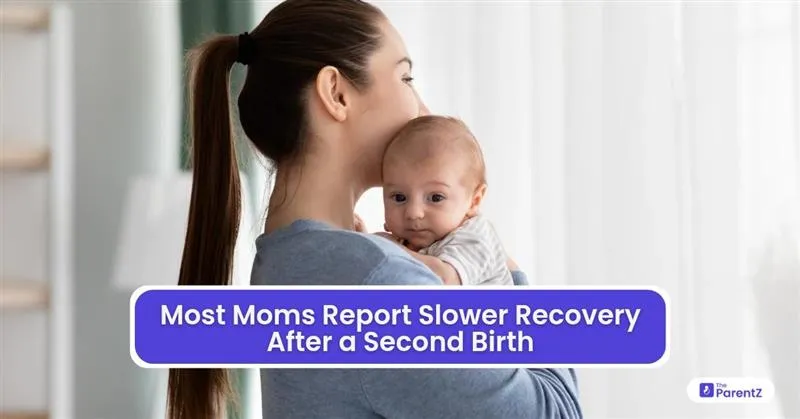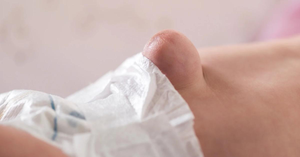She still remembers the first night home with her second baby. Swaddled in pink, her newborn slept quietly while her toddler demanded another bedtime story. Kavita, a 32-year-old mom from Delhi, thought she was prepared; she had done this before. But within days, exhaustion washed over her like a tide she couldn’t escape. Her back ached longer, the stitches felt sorer, and the swelling refused to go down as quickly as it had the first time. Across India and worldwide, thousands of mothers share Kavita’s story: after a second birth, recovery is often slower, harder, and more emotionally draining.
The Physiological Burden: Why Recovery Feels Harder
Studies published in Obstetrics & Gynecology show second-time mothers are more likely to report prolonged uterine involution (the shrinking of the uterus) compared to first-time mothers. The uterus has stretched once before, and residual laxity can delay firming up. Research by the American College of Obstetricians and Gynecologists (ACOG) highlights that perineal tears, especially if experienced during the first birth, are more likely to worsen or recur, increasing pain and extending healing.
A systematic review in the Journal of Maternal-Fetal & Neonatal Medicine confirms increased pelvic floor dysfunction rates after multiple births, with symptoms like urinary incontinence and pelvic heaviness persisting longer. These biomechanical strains contribute to a slower and more uncomfortable recovery trajectory.
The Weight Factor: Cumulative Metabolic Impact
According to the International Journal of Obesity, women often enter second pregnancies with retained weight from their first postpartum period. A 2021 meta-analysis showed an average retention of 4-5 kilograms after the first birth, which can compound weight-related complications in subsequent deliveries. Increased body mass index (BMI) is associated with higher rates of cesarean sections, slower wound healing, and a greater risk of postpartum infections, all of which prolong recovery.
Moreover, research in Pediatrics suggests that obesity-induced inflammation can impair the body’s normal healing processes, explaining why some second-time moms, particularly those who gained excessive weight between pregnancies, experience longer recoveries.
Emotional Exhaustion: Mental Load Multiplies
For many mothers, the second postpartum period doesn’t come with the luxury of focused rest. A toddler still needs feeding, entertaining, and comforting. Sleep deprivation hits harder when split between a newborn’s night feeds and a firstborn’s early morning wake-up calls.
A 2022 cohort study in BMC Pregnancy and Childbirth revealed that rates of postpartum depression (PPD) are higher in mothers of two or more children, especially within the first three months. The compounded demands of caring for more than one child lead to chronic stress, which research shows can elevate cortisol levels, interfere with milk production, and even delay uterine healing.
Real Stories: Echoes from Indian Mothers
In a qualitative study at AIIMS Delhi, second-time mothers like Shweta, 29, shared that they felt “unprepared” for the intensity of the second recovery. Unlike the first time when families often shower new moms with attention, visitors expect them to be “experienced,” leaving them with less support. Others, like Anisha from Pune, described heightened anxiety about balancing two children, which made sleep elusive and recovery longer.
Hormonal Changes: The Unseen Culprit
Progesterone and estrogen drop dramatically after birth, but the hormonal roller coaster is steeper for mothers with closely spaced pregnancies. A study in Gynecologic Endocrinology showed that pregnancies within two years of each other can cause persistently altered hormone levels, affecting mood, sleep, and tissue repair. Breastfeeding two children simultaneously, or tandem nursing, can further strain the hormonal equilibrium, delaying recovery.
Impact on Pelvic Floor and Abdominal Muscles
Multiple pregnancies stretch the linea alba, the connective tissue between the left and right abdominal muscles, leading to diastasis recti (abdominal separation). The American Journal of Physical Medicine & Rehabilitation reports that diastasis is more severe and slower to resolve after a second birth, resulting in prolonged back pain and core weakness.
Pelvic floor therapists note that repeated vaginal births can weaken supportive ligaments, contributing to increased prolapse risk, as published in Female Pelvic Medicine & Reconstructive Surgery.
Cesarean Births: Greater Risks the Second Time
If a mother undergoes a repeat cesarean, scar tissue from the first surgery can complicate the second operation. According to Obstetric Anesthesia Digest, adhesions formed after the first cesarean make the uterus and bladder more prone to injury, bleeding, and infection, all of which extend the recovery period. Second-time cesarean mothers also face higher odds of postpartum hemorrhage.
Strategies to Support Faster Recovery
Medical literature and clinical best practices suggest:
- Pelvic floor rehabilitation: Early engagement with physiotherapists specializing in postpartum recovery can strengthen weakened muscles and reduce pain.
- Rest prioritization: Coordinating shifts with family or hiring temporary help can allow mothers to sleep when the baby sleeps, a strategy proven to reduce PPD risk.
- Nutrition optimization: A diet rich in protein, iron, and anti-inflammatory foods accelerates tissue repair. As per Clinical Nutrition ESPEN, deficiencies in vitamin D and omega-3s are linked with prolonged recovery.
- Weight management: Gradual weight loss between pregnancies reduces complications in subsequent births, as highlighted in The Lancet’s maternal health series.
- Mental health screening: Early detection of PPD through standardized tools like the Edinburgh Postnatal Depression Scale leads to quicker interventions and improved recovery outcomes.
When to Seek Medical Help
Mothers recovering after a second birth should promptly consult their healthcare provider if they experience:
- Persistent fever above 100.4°F (38°C)
- Severe wound pain or foul-smelling discharge
- Heavy bleeding soaking more than one pad per hour
- Signs of deep sadness or thoughts of self-harm
- Difficulty urinating or incontinence worsening over time
Early intervention can prevent complications that prolong recovery or threaten long-term health.
Conclusion: Compassion and Awareness Matter
Recovery after a second birth is often longer, more painful, and emotionally taxing. A combination of physical strain, hormonal shifts, increased responsibilities, and retained weight from the first pregnancy explains why many mothers feel overwhelmed. Realizing this is not a personal failure but a common, medically documented experience can empower mothers and families to seek support without guilt. As Kavita reflects today, “My second recovery taught me patience. But it also taught me that asking for help is not weakness, it’s wisdom.” By spreading awareness and compassion, we can support mothers through every postpartum journey, whether it’s their first, second, or beyond.









Be the first one to comment on this story.